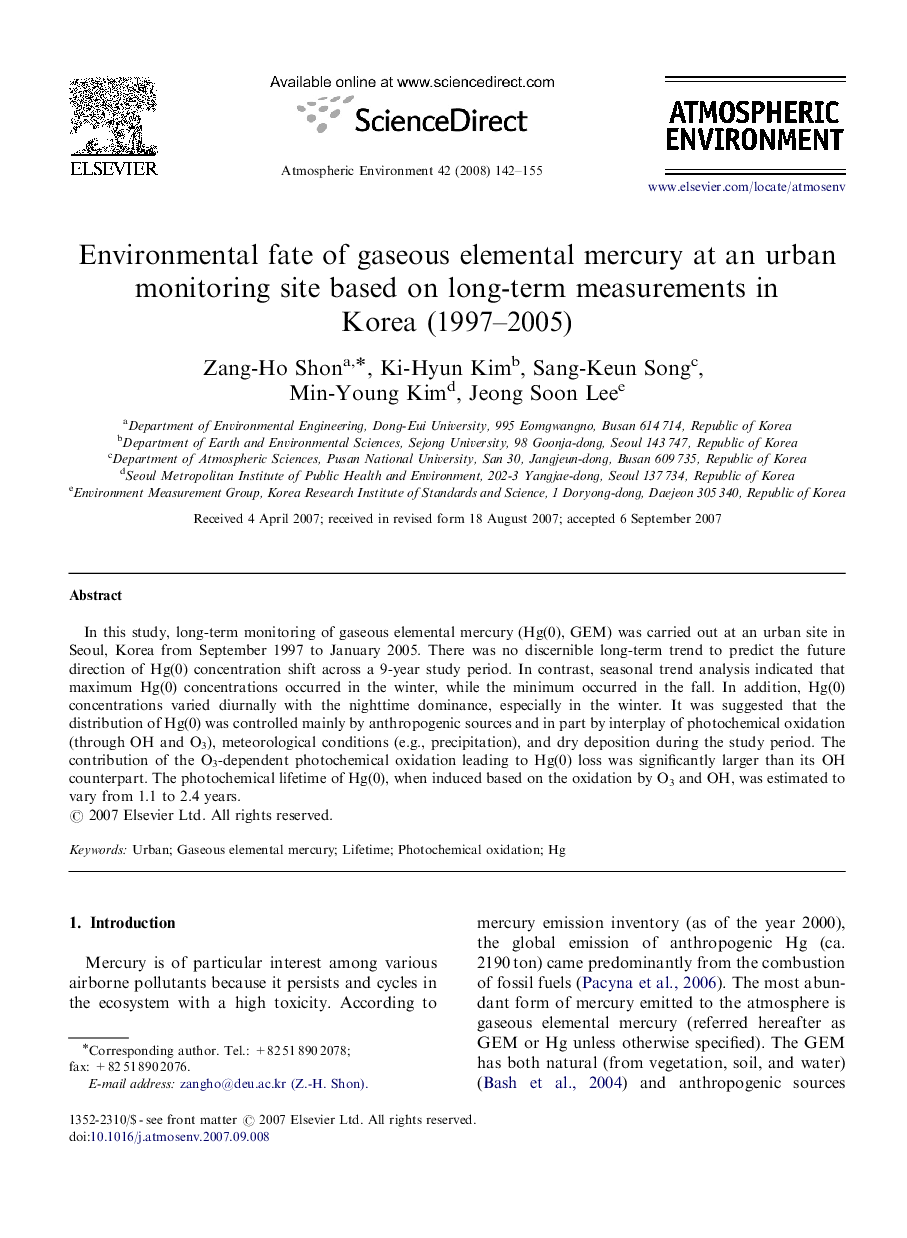| Article ID | Journal | Published Year | Pages | File Type |
|---|---|---|---|---|
| 4442716 | Atmospheric Environment | 2008 | 14 Pages |
In this study, long-term monitoring of gaseous elemental mercury (Hg(0), GEM) was carried out at an urban site in Seoul, Korea from September 1997 to January 2005. There was no discernible long-term trend to predict the future direction of Hg(0) concentration shift across a 9-year study period. In contrast, seasonal trend analysis indicated that maximum Hg(0) concentrations occurred in the winter, while the minimum occurred in the fall. In addition, Hg(0) concentrations varied diurnally with the nighttime dominance, especially in the winter. It was suggested that the distribution of Hg(0) was controlled mainly by anthropogenic sources and in part by interplay of photochemical oxidation (through OH and O3), meteorological conditions (e.g., precipitation), and dry deposition during the study period. The contribution of the O3-dependent photochemical oxidation leading to Hg(0) loss was significantly larger than its OH counterpart. The photochemical lifetime of Hg(0), when induced based on the oxidation by O3 and OH, was estimated to vary from 1.1 to 2.4 years.
